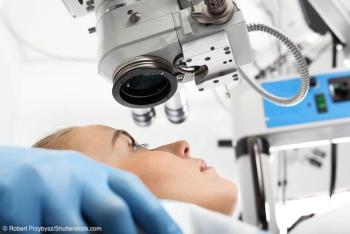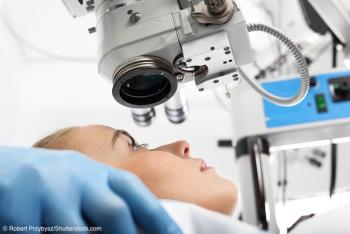
WFG LASIK achieved better 25% contrast acuity gains in corrected/uncorrected distance VA

WFG LASIK achieved better 25% contrast acuity gains in corrected/uncorrected distance VA

Doug Katsev, MD, discusses the findings from a study concerning atopic dermatitis and cataract development for the Medical News Minute.


Are older individuals less likely to undergo cataract surgery if they have small support groups? A retrospective cohort study of Medicare patients published in JAMA Ophthalmology looked at this question.

Findings from a pilot study show that a novel accommodative intraocular lens (AIOL, Lumina, Akkolens) provides a true accommodative response that is maintained for at least 2 years and preserved following Nd:YAG laser capsulotomy.

A micro-interventional device that uses a nitinol filament can dissect any grade cataract without causing capsular stress.

Concerns over the ocular surface, compliance, cost, and patient callbacks are lessened when surgeons take a transzonular approach to medication delivery during cataract surgery.

Intracameral antibiotics used for prophylaxis are a preferred approach during cataract surgery.

The 2017 meeting of the American Academy of Ophthalmology will convene in New Orleans from Nov. 11 to 14. Go to www.aao.org/annual meeting for the latest updates

Adopting new technologies across multiple practices using a single ambulatory surgery center can be challenging. A systematic approach leverages technology champions, employs consistent communications, and provides administrative support to secure reimbursement.

Patient selection is the key factor in obtaining the best visual outcomes after cataract surgery and intraocular lens implantation.

Because a variety of vision-limiting macular pathologies are detectable only with OCT, this imaging should be performed in all patients undergoing cataract surgery.

Researchers share findings from a comparison of relative efficiency and chatter of two phaco tips with identical optimal settings.

Pattern electroretinography (PERG) and visually evoked potential (VEP) tests can objectively evaluate the function of axion and retinal ganglion cells. These test results can add another component in successfully treating patients with cataract and/or glaucoma.

A new small-aperture intraocular lens (IOL) extends patients’ depth of focus as well as multifocal IOLs with fewer dysphotopsias, researchers say.

Scleral tunnel, “glued” fixation technique works better than alternative fixation techniques in cases where intraocular lenses (IOLs) cannot be placed in capsular bag or in the sulcus, according to Sumit Garg, MD.

The most recent analyses of data from the ARMOR (Antibiotic Resistance Monitoring in Ocular micRoorganisms) Surveillance Program can guide clinicians choosing antibiotic therapy for initial empiric therapy and infection prophylaxis. The information also reinforces the importance of prudent antibiotic prescribing to limit the development of bacterial resistance to existing options, according to Penny Asbell, MD.

Though extended depth-of-focus lenses tend to be more forgiving of residual refractive error and mild decentration than other presbyopia-correcting IOLs, it is important to select patients carefully and follow good preoperative protocols for a successful outcome.

Surgeons should use a centroid value for surgically induced astigmatism rather than a mean or median value when working with toric IOL calculators.

Cataract and refractive surgeons should use prophylaxis to avoid reactivation of the herpes simplex virus (HSV) in patients with a history of infection with this virus, according to Elizabeth Yeu, MD.

Having explored the various options available for micro-invasive glaucoma surgery (MIGS), I now use several devices with success. One MIGS device (XEN Gel Stent, Allergan) differs from the others in that it drains aqueous into the subconjunctival space and can be performed as a stand-alone procedure without cataract surgery or combined with cataract surgery.

Researchers conducted a 6-month study of patients implanted with the AcrySof IQ PanOptix presbyopia-correcting IOL to determine the binocular defocus curve of the lens. They concluded that these early results show good visual performance across the whole range of defocus. No unexpected adverse events were reported

In the past year, Matossian Eye Associates added a new category of presbyopia-correcting IOLs to the practice: the extended depth of focus (EDOF) IOL. The first IOL in this category is the Tecnis Symfony (Johnson & Johnson Vision). EDOF lenses from other manufacturers are in clinical trials, so it behooves the cataract surgeon to better understand how these lenses work.

Ophthalmology Times asked readers for insights on antibiotics and eye infections from clinicians in the field - including experience with postoperative infections after eye surgery, if you use topical antibiotic prior to cataract surgery, how you choose antibiotics in a routine surgical prophylaxis, and more. The 118 U.S.-based ophthalmologists who responded were entered into a drawing to win a $200 gift card. Here are the survey results.

Findings in the journal Clinical Ophthalmology report that using the technique phacoemulsification was performed without complications in 607 of 609 cataract eyes.